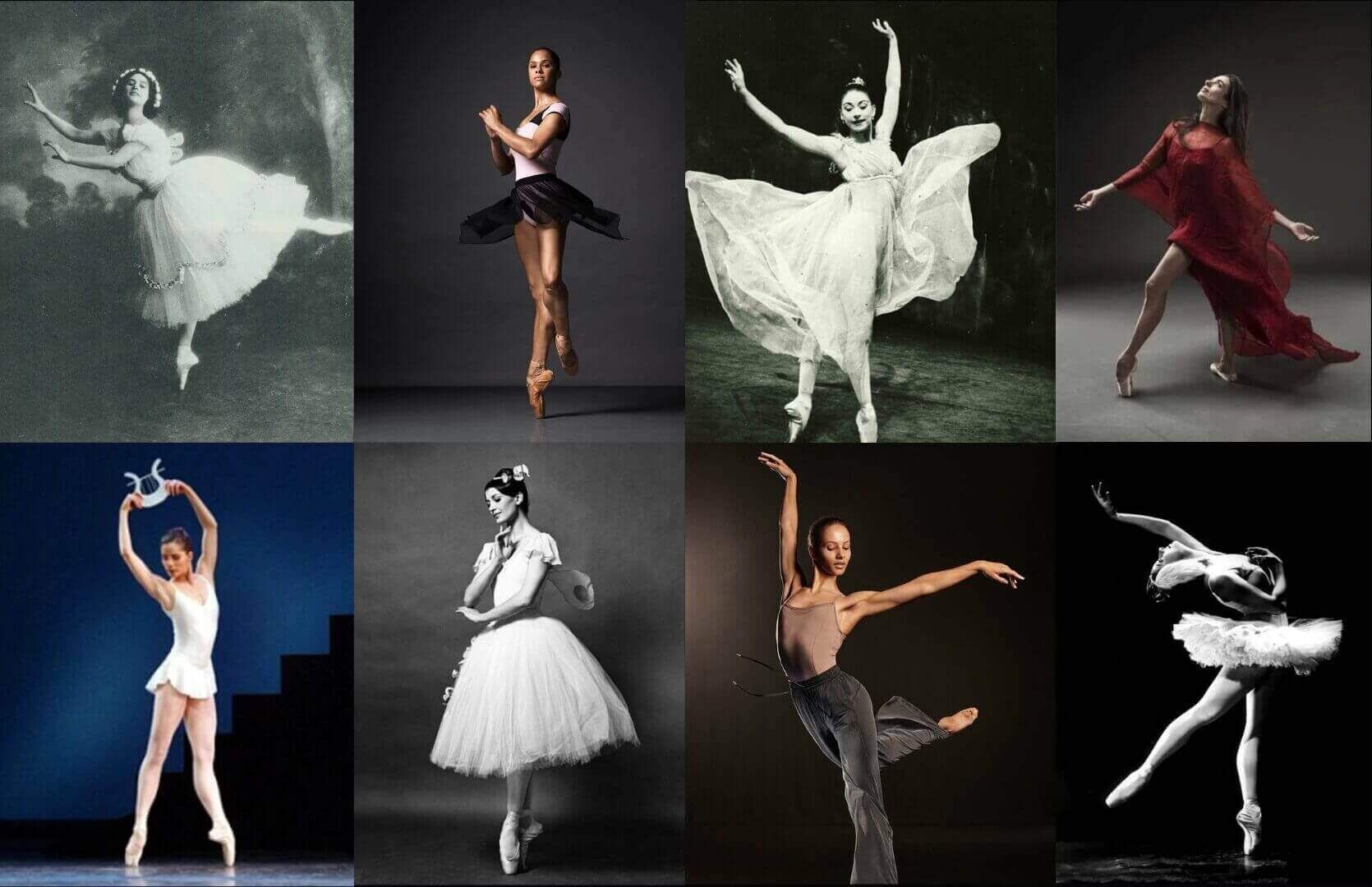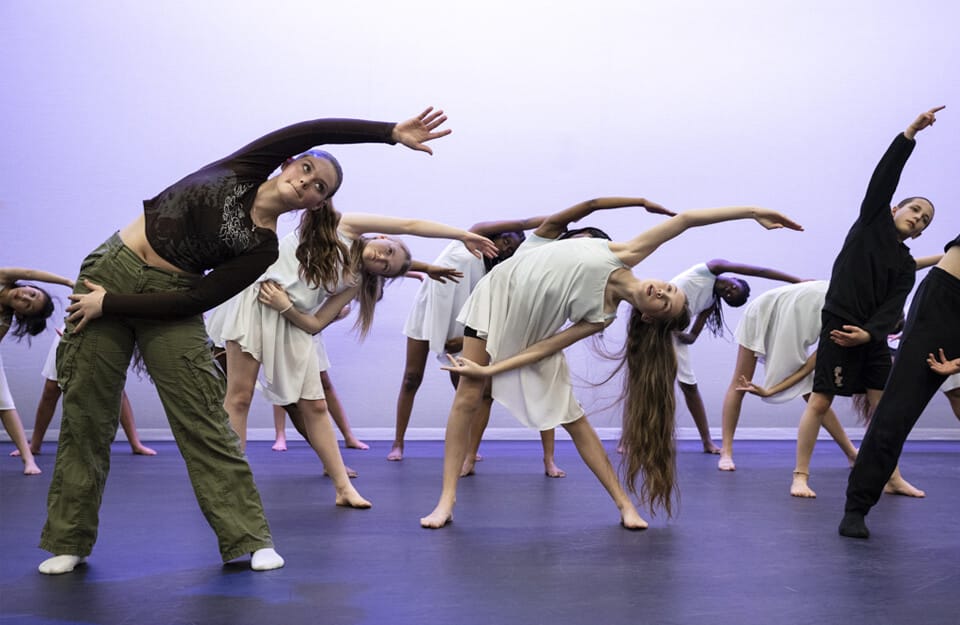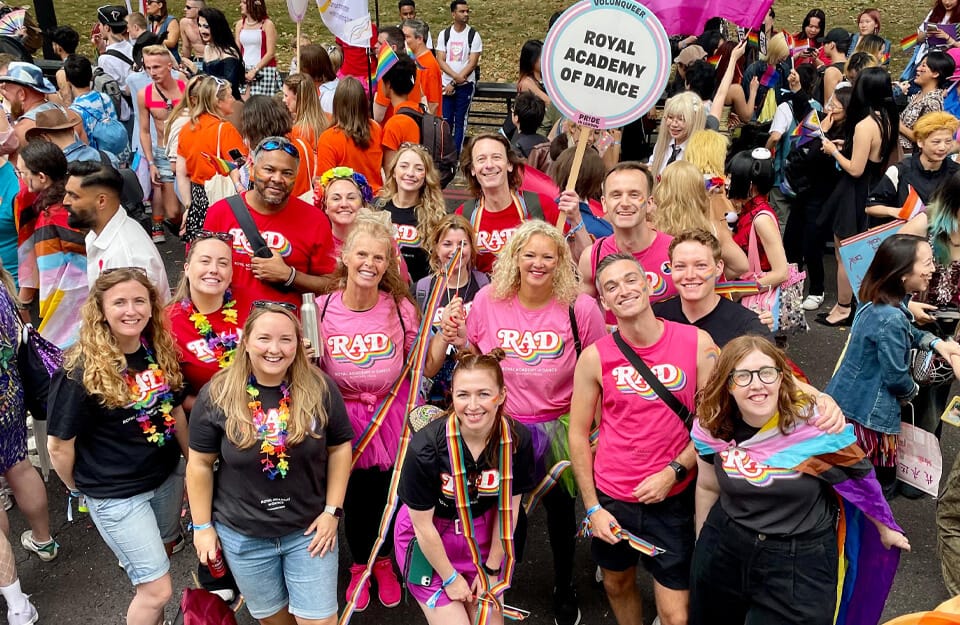The most influential female dancers

To celebrate International Women’s Day, we wanted to feature ten of the most influential female dancers. The difficulty is that we had trouble whittling the list to just ten. And so instead, here we present to you a ‘Top Twelve’.
This is a chance to honour the achievements and contributions of women in every field, including dance. Throughout history, female dancers have captivated audiences, broken boundaries, and inspired generations. Some of these incredible women studied the Royal Academy of Dance (RAD) Syllabus or trained with us, cementing our global influence on ballet and dance education.
1. Margot Fonteyn (1919–1991)
An iconic British ballerina, Margot Fonteyn was a principal dancer with The Royal Ballet and the longest-serving President of the RAD. Known for her timeless elegance and partnership with Rudolf Nureyev, she remains one of the most celebrated ballerinas ever.
Fonteyn’s influence extended beyond the stage, as she dedicated herself to mentoring young dancers and promoting the art form globally. Her performances in classics like Swan Lake and Sleeping Beauty set a standard for generations to follow.
The RAD’s flagship annual event, The Margot Fonteyn International Ballet Competition, is another way in which her legacy continues.
2. Anna Pavlova (1881–1931)
One of the most famous ballerinas of the 20th century, Anna Pavlova is best known for her role in The Dying Swan. Her commitment to bringing ballet to the world made her a pioneer in international dance.
Among Pavlova’s most notable accomplishments was forming her own touring company, allowing her to introduce ballet to audiences who had never experienced it before. Her legacy continues in the form of the Pavlova Technique, which influenced modern ballet training.
3. Carla Fracci (1936-2021)
Described as ‘Italy’s prima ballerina of the 20th century’, Fracci captured the heart of her country, unlike any other dancer. The daughter of a tram driver father and a factory worker mother, she was sent to stay with relatives when World War II broke out but returned to Milan to be accepted to a dance school attached to La Scala, later going on to join the company.
Her talents were recognised by all of the great choreographers of the day, including Anton Dolin and John Cranko, and she went on to dance with The Royal Ballet, Stuttgart Ballet, Royal Swedish Ballet, and American Ballet Theatre, counting Erik Bruhn, Rudolf Nureyev and Mikhail Baryshnikov among her partners.
4. Sylvie Guillem (b. 1965)
A French ballerina, Sylvie Guillem was a principal dancer with the Paris Opera Ballet before joining The Royal Ballet. Her technical precision and artistic depth set new standards in contemporary ballet.
Guillem is known for pushing the boundaries of traditional ballet, embracing contemporary dance later in her career. Her farewell tour, Life in Progress, demonstrated her versatility and cemented her status as one of the greatest dancers of all time.
5. Darcey Bussell (b. 1969)
A former principal ballerina with The Royal Ballet, Darcey Bussell trained at The Royal Ballet School and has served as President of the RAD since 2012.
Bussell’s performances were known for their athleticism and dramatic presence, making her one of Britain’s most beloved ballerinas. Since retiring from the stage, she has dedicated herself to dance education, fitness initiatives, and television appearances, further promoting the art form to new audiences.
Her involvement in RAD initiatives has helped inspire young dancers everywhere, and she continues to influence dance through her advocacy and mentorship.
6. Misty Copeland (b. 1982)
Misty Copeland made history as the first African American principal dancer with American Ballet Theatre and her inspiring journey has encouraged greater diversity in ballet.
Copeland has used her platform to speak out for inclusion and representation in the arts. She has authored books and worked with organisations to support young dancers from underrepresented backgrounds.
At the RAD, we were excited at the opportunity to interview Copeland for our podcast ‘Why Dance Matters’. You can listen to her episode here.
7. Tamara Rojo (b. 1974)
Spanish ballerina and former principal of The Royal Ballet, Tamara Rojo also served as Artistic Director of English National Ballet. Her influence as a dancer and leader has reshaped modern ballet.
Rojo emphasised the importance of storytelling and innovation, and she championed female choreographers, bringing fresh perspectives to classical works.
8. Alicia Alonso (1920–2019)
A prima ballerina assoluta, Alicia Alonso was instrumental in developing ballet in her native Cuba. Her perseverance in the face of visual impairment is legendary, having lost some of her eyesight by the age of 19.
Despite this, Alonso performed with remarkable precision as part of the American Ballet Caravan which later became the New York City Ballet. A pioneer in introducing Cuban dance to the world, she also founded the Ballet Nacional de Cuba, fostering a unique ballet tradition that continues to thrive today.
9. Alessandra Ferri (b. 1963)
An Italian prima ballerina, Alessandra Ferri was a principal dancer with The Royal Ballet, American Ballet Theatre, and La Scala Theatre Ballet. Her deep emotional expression and stunning technique have made her a legendary figure.
Ferri is known for her extraordinary portrayals of dramatic roles, particularly in Romeo and Juliet and Manon. Even after retiring, she made a celebrated comeback at the age of 50, performing in The Piano Upstairs at the Spoleto Festival, proving that artistry in ballet extends far beyond youth. Her return challenged conventional ideas about age in ballet, proving that mature dancers can still deliver emotionally profound and technically impressive performances.
Ferri’s dedication to ballet education and mentorship continues to shape the next generation of dancers. In 2024, she was selected as a judge for The Fonteyn, the RAD’s prestigious ballet competition, further highlighting her influence on the art form.
10. Gillian Lynne (1926–2018)
Renowned for her choreography in Cats and The Phantom of the Opera, Lynne trained at the RAD and revolutionised musical theatre dance.
Lynne’s work transformed stage movement, emphasising character-driven choreography. The Gillian Lynne Theatre in London was named in her honour, marking her lasting impact on the performing arts.
11. Francesca Hayward (b. 1992)
A principal dancer with The Royal Ballet, Hayward has gained international recognition for her stunning performances and also appeared in the 2019 Cats film.
Hayward’s natural grace and emotive storytelling have made her a standout in contemporary ballet. As a rising star, she continues to inspire young dancers with her dedication and artistry.
12. Michaela DePrince (1995-2024)
From the humblest and most difficult beginnings as an orphan in war-torn Sierra Leone, DePrince was adopted by an American couple who enrolled her in ballet classes. She became the youngest principal at the Dance Theatre of Harlem and danced with the Boston Ballet and the Dutch National Ballet.
Throughout her career, she also made time to advocate for children around the world affected by conflict and violence.
DePrince passed away in 2024 at the age of just 29.
The lasting legacy of women in dance
These extraordinary women have shaped the world of dance, breaking barriers and setting new artistic standards, marking them as the most influential female dancers of all time. Many have trained under or have a relationship of their own with the RAD, showcasing our continued impact on the global dance community.
This International Women’s Day, we celebrate these legendary dancers and all the women who dedicate their lives to the art form, whether teaching or performing, inspiring new generations to pursue their passion for dance.




